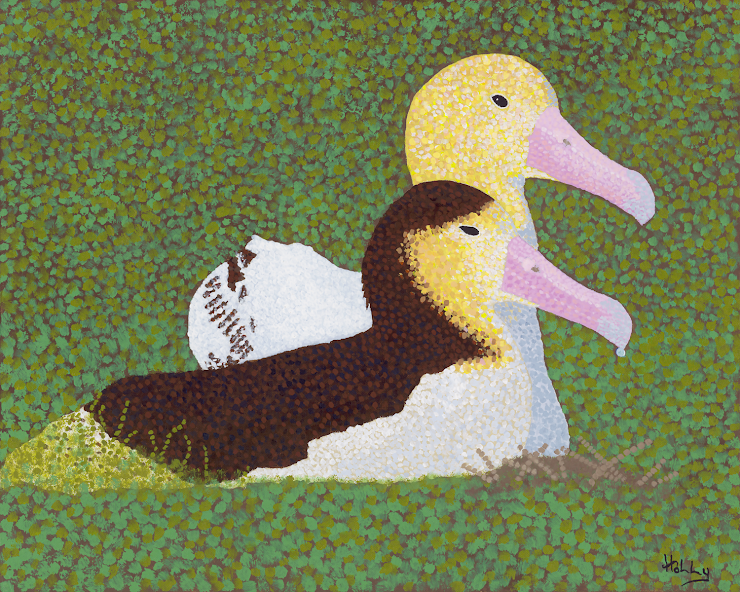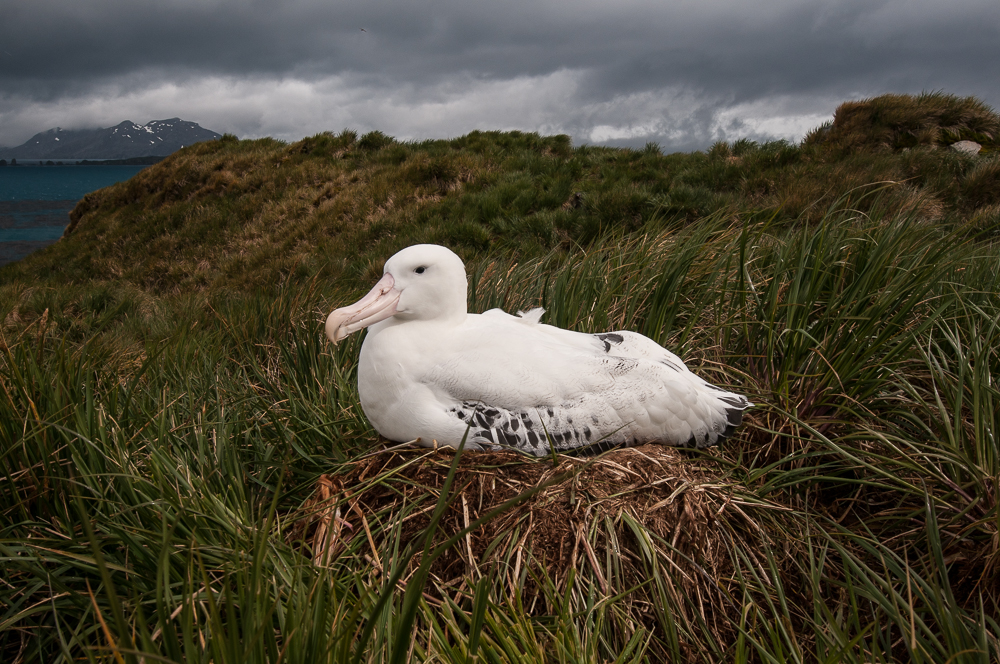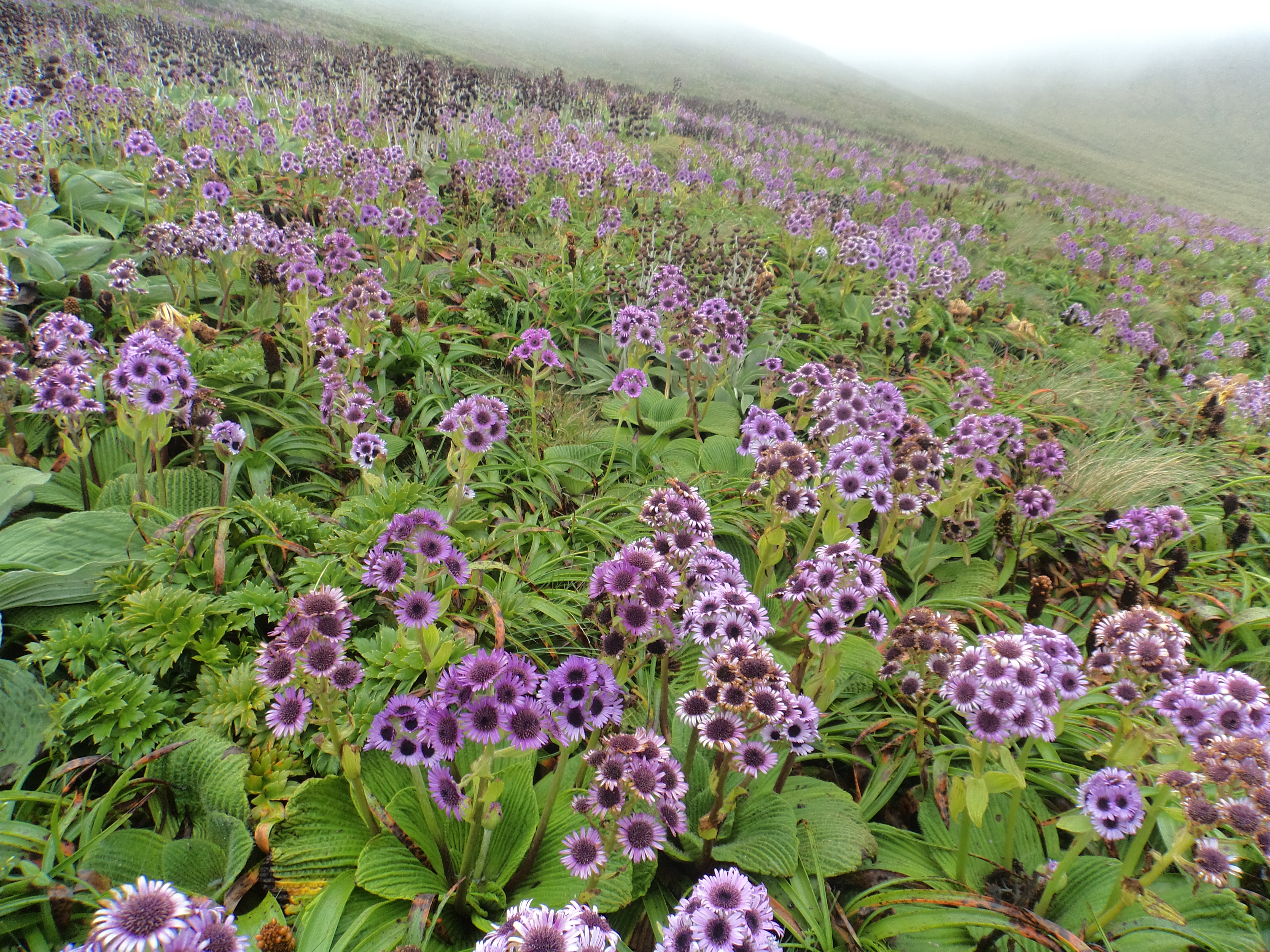
Highlights of life on Midway by Ilana Nimz
The Friends of Midway Atoll National Wildlife Refuge (FOMA) held its first art contest during June, announcing the winners last month (click here). All the submitted entries are now available for viewing here. Three entrants, Isabelle Beaudoin, Ilana Nimz and Holly Parsons, have previously supported the Albatross and Petrel Agreement with their artworks, photographs and writings. Their submitted artworks, along with descriptions follow.
Ilana Nimz: “This is a whimsical repeating tile pattern depicting highlights of life on Midway, including rafting Moli [Laysan Albatross], dancing Ka'upu [Black-footed Albatross], endangered ‘ilio holo i ka ua ua [Hawaiian Monk Seal], numerous shorebirds, and the cryptic nunulu [Bonin Petrel]. The lagoon is home to a resident pod of naia [dolphins], and the ponds have thriving Laysan ducks.”

“George and Geraldine” by Holly Parsons
Holly Parsons: “The pointillist portrait “George and Geraldine” depicts the beloved pair of Short-tailed Albatross who have chosen to nest on Kuaihelani [Midway Atoll], unlike the rest of their species, who nest in Japan. Quite the pioneering couple!”

“The Yawn” by Isabelle Beaudoin
Isabelle Beaudoin submitted three artworks in her “Weird Chicks” series drawn from life on Kure Atoll. “The Yawn”, depicted here, along with “Wing Stub Stretch” and “The Aeroplane Stretch”.
John Cooper, Emeritus Information Officer, Agreement on the Conservation of Albatrosses and Petrels, 27 August 2025

 English
English  Français
Français  Español
Español  A breeding Wandering Albatross on Prion Island, photograph by Anton Wolfaardt
A breeding Wandering Albatross on Prion Island, photograph by Anton Wolfaardt Grey-headed Albatross at sea, photograph by Kirk Zufelt
Grey-headed Albatross at sea, photograph by Kirk Zufelt Indian Yellow-nosed Albatross near Marion Island, January 2025, photograph by Laurie Smaglick Johnson
Indian Yellow-nosed Albatross near Marion Island, January 2025, photograph by Laurie Smaglick Johnson